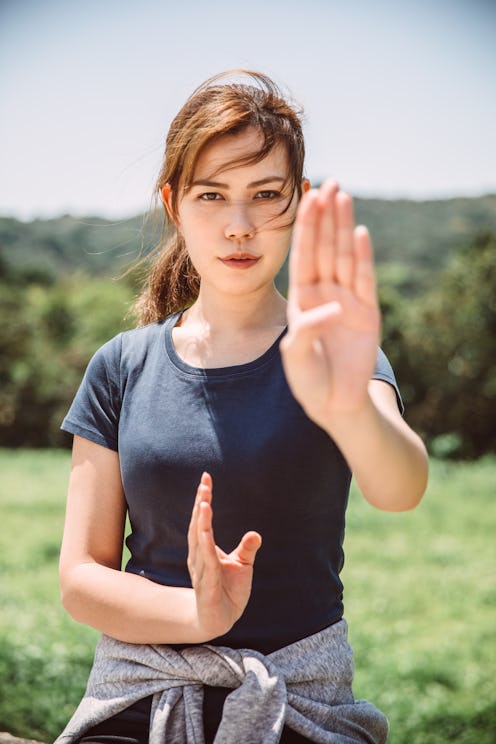Wellness
8 Surprising Benefits Of Tai Chi
Don't be fooled by the slow movements.

Shutterstock
Tai chi is an ancient Chinese practice that involves flowing through gentle movements and postures, often paired with deep breathing. Today, it's popular around the globe, thanks to its many benefits — in fact, Apple Watch is adding the workout modality to its catalog this fall.
FG Trade/E+/Getty Images
It’s Low-Impact
There’s no heavy pounding or jumping in tai chi, which means the movements are easy on your joints and connective tissue, says Chris Cinnamon, head instructor at Chicago Tai Chi. So it’s a great activity if you have sensitive joints or are rehabbing an injury.
Shutterstock
It Can Relieve Pain
The low-impact practice can also soothe pain, says Cinnamon. The fluid movements gently boost your activity levels, strength, and mobility to shake out stiffness without aggravating chronic pain conditions like arthritis, he explains.
Henrik Weis/Stone/Getty Images
It Reduces Stress
Smoothly moving through tai chi postures requires focus, and dedicating that attention to your body takes your mind off of whatever else is going on. The end result of that mindfulness? Less stress, says Cinnamon. The deep breathing aids in that, too.
Shutterstock
It Boosts Flexibility
Tai chi can help you build flexibility, no splits necessary, says mindset and movement expert Nadia Murdock. The practice of constantly flowing through its stretch-like postures keeps your joints and muscles limber, which can help you grow and stay lithe.
Tolimir/E+/Getty Images
It Works Your Lower Body
Though tai chi is gentle, your muscles are engaged. Cinnamon says it works your legs thanks to constant weight shifting, hip rotation, and stepping. And advanced versions of the practice incorporate moves like kicks and spins to further build strength.
Shutterstock
It Boosts Mobility
All that movement and rotation can improve your ability to move around in general, says certified trainer Holly Roser. And if you have chronic pain, regular tai chi can help ease your discomfort and increase your mobility.
Asia Images/AsiaPix/Getty Images
It Improves Balance
Tai chi often involves slow-motion movements, which means it requires stability — your body’s fighting to not tip over as you shift your weight from one posture to another (some of which are one-legged poses). The end result? Better balance, says Roser.
zoranm/E+/Getty Images
It Can Improve Your Mood
There’s a reason tai chi is often referred to as “meditation in motion,” says Murdock. The graceful moves, deliberate breathing, and mindfulness of the practice can all help reduce anxiety and depression while boosting your sense of calm, she explains.